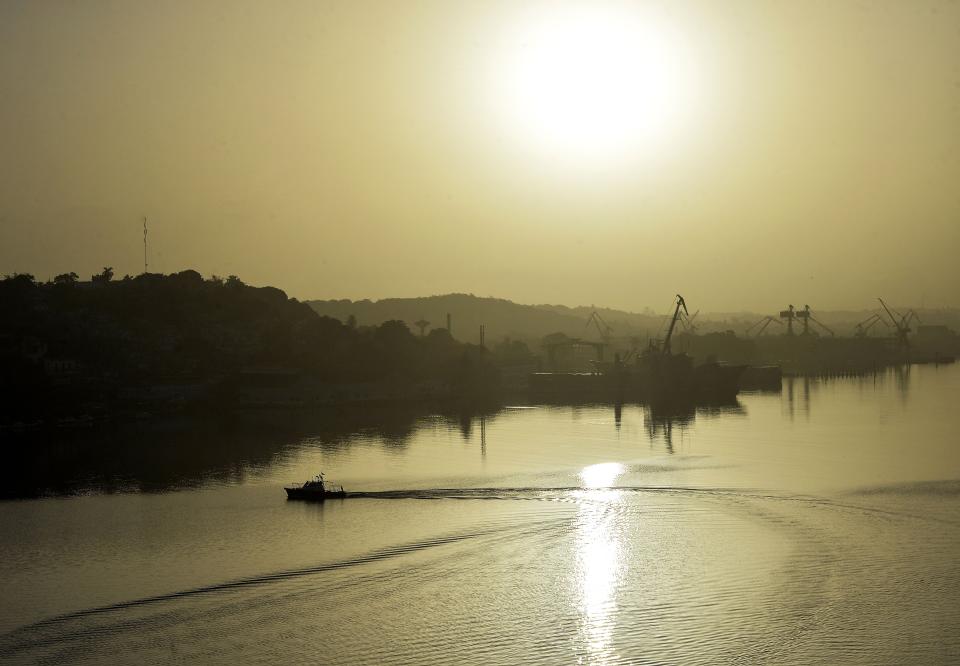What is 'dirty rain'? How Saharan dust is impacting the weather in Florida
Waves of Saharan dust will continue to fly over Florida, but will it bring "dirty rain"?
Florida is seeing plumes of Saharan dust and will continue to see them every three to five days, Ross Giarratana, a meteorologist with the National Weather Service's Tampa Bay forecast office, told USA TODAY.
The dust brings the possibility of "dirty rain." This may sound awful and scary, but it is harmless. Some areas of Florida are expected to see dirty rain this weekend, according to the Pensacola News Journal, a part of the USA TODAY Network. South Florida, which includes Miami and Fort. Lauderdale already saw a "dirty rain" shower, and areas in the panhandle could be next. But it isn't anything to worry about.
" It's just dust," said Alex DaSilva, AccuWeather's lead hurricane forecaster, told USA TODAY. "It won't hurt you."
'Uncharted territory': Sunday was Earth's hottest day on record
What is Saharan dust?

Saharan dust is just dust and sand from the continent of Africa that gets brought over via wind around this time every year.
Winds, known as trade winds, pick up Saharan dust, lift it into the atmosphere, and bring it across the Atlantic Ocean, said Giarratana. June and July are the months that bring the most dust.
This isn't a new phenomenon, but people are talking about it more because meteorologists can better predict when the dust will be brought over, reports the Pensacola News Journal.
How does 'dirty rain' get created?
As rain droplets form, they tend to form around particles up in the atmosphere, including Saharan dust, said Giarratana.
If and when it rains, the trapped particles fall to the ground with the droplets.
However, the term itself is rarely used by the National Weather Service, said Giarratana. It tends just to call it the Sarahan dust.
"If it's in high concentrations, and if it rains, you can get kind of like streaks on people's cars," said DaSilva. "Because the water droplet falls, and it's got some dirt in it."
Are 'dirty' rain and Saharan dust harmful?
Nope! Unlike acid rain, which is rain that absorbs toxic pollutants released into the atmosphere by factories and manufacturers, "dirty" rain absorbs the dust particles brought over by winds and is harmless, said DaSilva.
But, while the droplets "won't kill you," DaSilva does advise people not to drink the dirty rain.
If a heavy concentration of dust is brought over and stays in the lower levels of the atmosphere, people with asthma and other conditions that affect the lungs may be affected, said Giarratana.
Those who would be affected should stay up to date with the air quality in their area. The National Weather Service or local government will publish an air quality alert if this happens.
However, since it usually remains so high in the atmosphere, it isn't usually a problem.
Saharan dust creates prettier sunsets and sunrises
Folks may want to plan a sunset picnic around when the winds bring some dust to the area if the air quality is good.
The dust might cause the horizon to look hazier, but it brings out different colors and creates an even more beautiful sunset.
A Saharan dust a day keeps the storms at bay?
Saharan dust also controls the number of storms that form in the tropics, according to DaSilva and Giarratana.
A warm, moist environment is crucial to create a storm. But the dust acts like a silica packet people receive in their packages and sucks out any moisture that might be in the atmosphere.
"What happens with the dust is it cuts off the moisture," said DaSilva. "It basically can choke off these systems because, again, they want plenty of moisture, and when you're taking the moisture away, it makes it harder for thunderstorms to develop."
Coincidentally, the dust is most likely to make an appearance in June and July, which is also when hurricane season is at its calmest, except for Hurricane Beryl, which formed in June and is the earliest category 5 hurricane ever recorded in the Atlantic, according to NOAA Climate.
This hurricane season is still expected to be extremely active, reports TC Palm, a part of the USA TODAY Network. But the Saharan dust is giving us a bit of a reprieve.
This is the perfect time to stock up on storm supplies or start gathering some if you have not done so already, said DaSilva.
Contributing: Cheryl McCloud, USA TODAY NETWORK - Florida; Brandon Girod, Pensacola News Journal
Julia is a trending reporter for USA TODAY. She has covered various topics, from local businesses and government in her hometown, Miami, to tech and pop culture. You can connect with her on LinkedIn or follow her on X, formerly Twitter, Instagram and TikTok: @juliamariegz
This article originally appeared on USA TODAY: 'Dirty rain': Why parts of Florida are seeing the phenomenon

